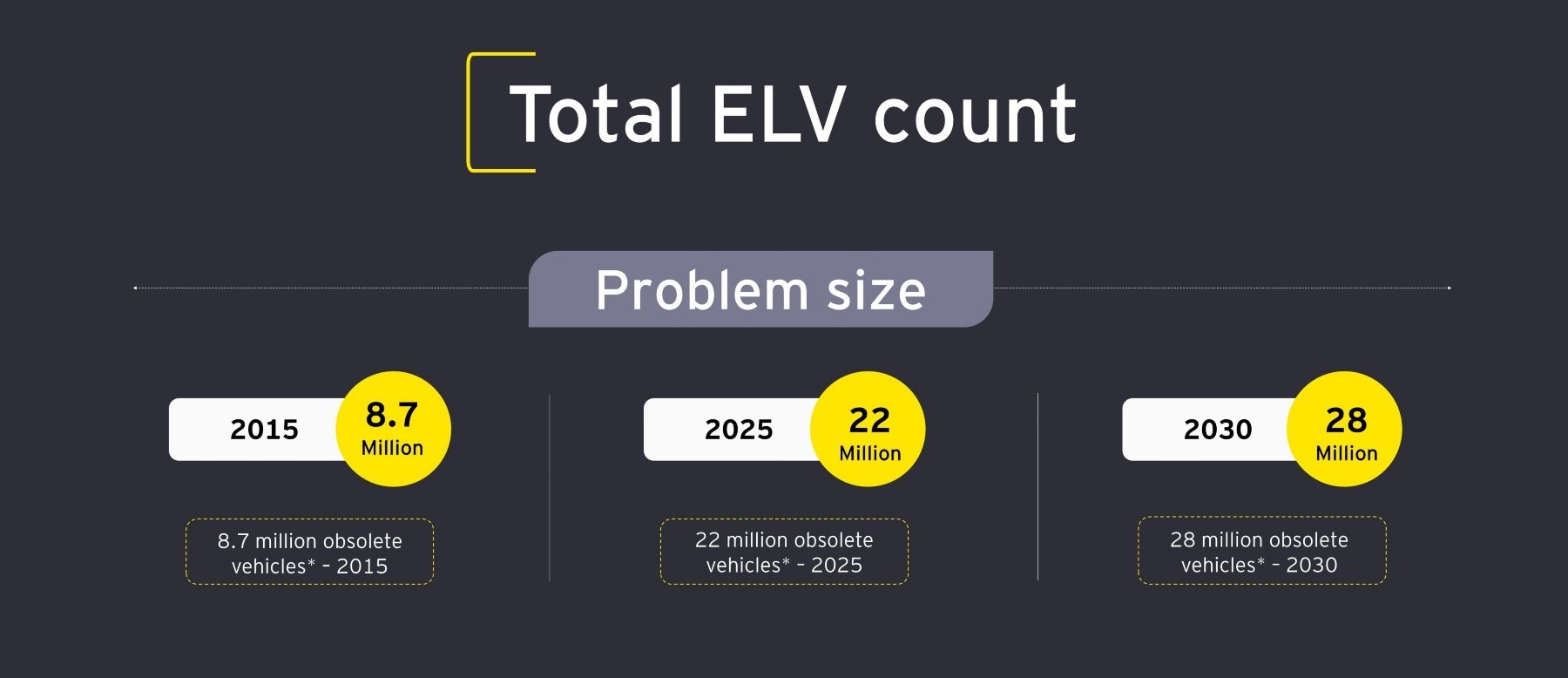Environmental issues and sustainability have become one of the main priorities with a focus on minimal use of non-renewable resources and minimal emission from pollutants. An important aspect of aggregated emission reduction is to increase the circularity across the automotive industry’s value chain including new processes and operating models related to end-of-life vehicles (ELVs). In this context a scrappage policy can provide some obvious benefits related to reduction in pollution, reduction in the fuel import bill, improved recycle or re-use of parts, generate replacement related demand and provide an impetus to structuring this part of the automotive ecosystem.
The increasing use of lightweight materials, electronics and multi-material concepts in vehicle design has also created challenges around import dependencies and the ability of vehicles to achieve greater levels of sustainability. The scrappage policy can act as an important catalyst for next phase of growth and as a platform for job creation.
There is an opportunity to set up new business models where new players and the traditional automotive ecosystem come together in an organized manner to provide products and services to consumers. We are at a point where we could see the emergence of a new business model that extends the current auto ecosystem, where both new players and traditional players can be involved to deliver solutions in an organized manner. The scrappage policy will provide novel opportunities for both new and existing players to build a robust go-to-market and offer consumers solutions to ease the end of life of vehicle resale / purchase processes.
The scrappage policy can provide an opportunity to new and traditional players to set up an organized operating model and ease the transition into a circular economy whereby the value embedded in relevant ELVs’ components and materials is recaptured through reuse, recycling and recovery. Select players in the market are already thinking through material treatment and opportunities to maximize the preservation of material quality. This may also make automotive OEMs and suppliers rethink the ways that vehicles and their materials are designed, constructed, used, and handled at end of life.
Internationally, 85-95% of the vehicle is recovered with the vehicle designs being well suited for easy dismantling and disposal. Europe and Japan have led the way and mandated 90%-95% of vehicle recovery from 2015. India can learn from other nations and adopt a path which focuses on multi-dimensional aspects of recycling and remanufacturing components.
While there is a lot more work to be done in the future, the scrappage policy does bring to the table a lot of positives. It should lead to a reduction in emissions, act as a catalyst for vehicle sales, savings on imported raw materials and an expansion of the overall automotive ecosystem including fitness centers, new aspects of supply chain, scrapping centers, and automation.



